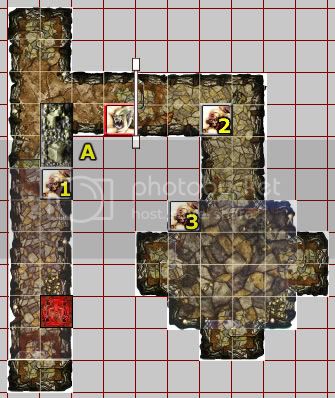I have some questions on how distance is calculated with certain skills and abilities that mention "within X spaces of" in their description, such as:
- Divine Retribution (DR)
- Runewitch Astarra's ability
- Kirga's ability
Within X spaces. How is this distance calculated? Do you have to be able to count the actual spaces of the shortest route leading to the spot that is to be affected? Does that take into account obstacles and/or doors? Or do these abilities pass through walls as well?
Is the term "spaces" meant to be actual spaces on the board, or do "fictional" spaces between the building blocks of a dungeon count too?

Take a look at the image. Assume vanilla Descent rules (6 spaces for Astarra). Suppose the master beastman is Runewitch Astarra, who has the skill Divine Retribution.
The door next to her is closed, but the area behind it has been revealed already. Suppose she just moved to the spot she is in now. Does the glyph flip? Her ability can only activate the glyph if it makes use of "Spot A", as marked on the image.
In my opinion (which might be biased as an OL) the rune doesn't flip, because I think the path towards the glyph should be traceable on the gameboard itself. However, I have players argueing with me that the rune should flip. Hence my question.
Same situation as before. Suppose the Runewitch is killed by an enemy figure on the spot she's in right now. Which of the skeletons die?
- The DR effect could be considered similar to a Blast attack: None of the Skeletons die because a Blast 3 attack on the space that the Runewitch occupies (which is basically what the DR simulates), doesn't affect any of the Skeletons.
- Skeleton 1 only dies if Obstacles are not taken into account when determining the area of effect (AoE) for the DR.
- Skeleton 2 only dies if closed doors do not affect the AoE of DR.
- Skeleton 3 only dies if the AoE of DR goes through walls.
I didn't create an example to illustrate Kirga's ability, but I assume it follows the same guidelines as the DR skill and the Runewitch's ability. Kirga's ability is the only one that specifies that LoS and other effects don't affect it. Still, the question remains about the walls.
 ).
).

